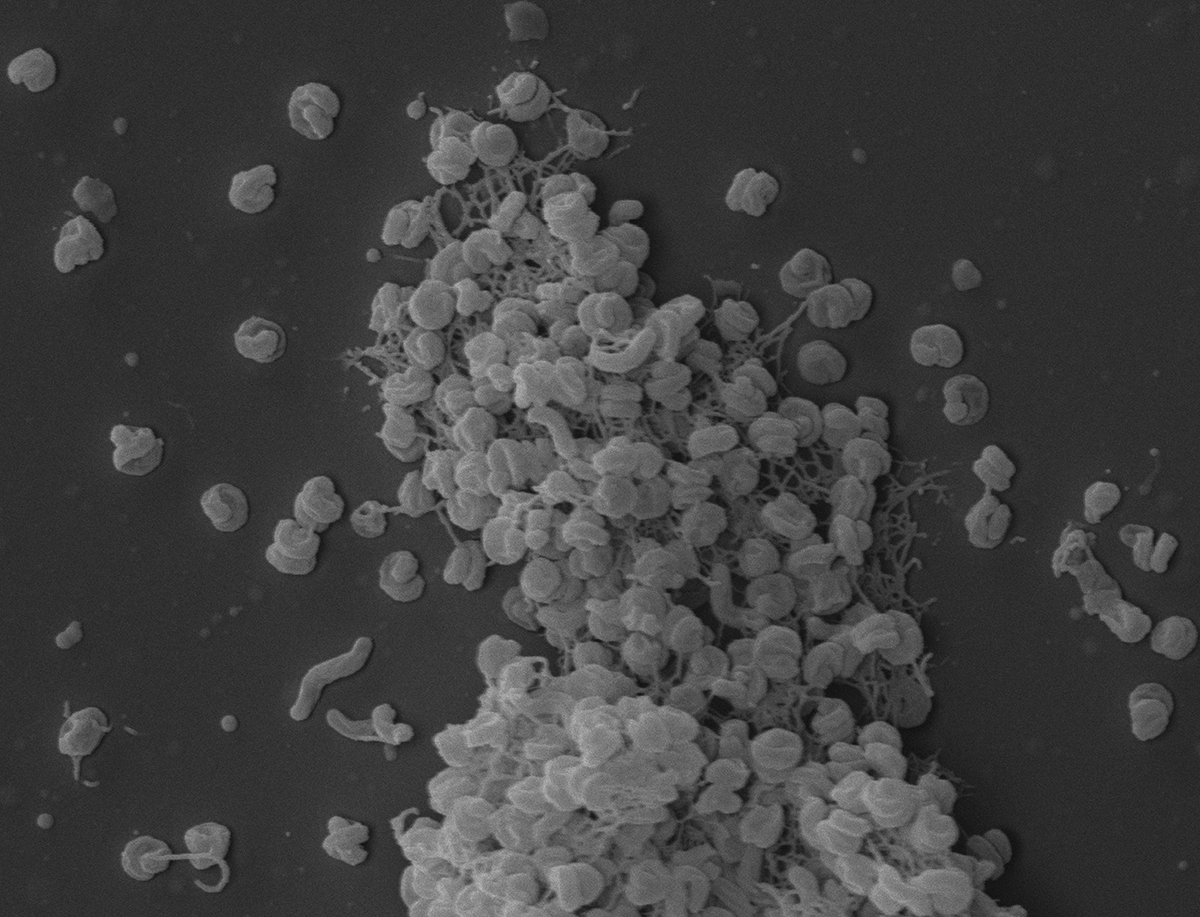
This microbe, nitrospira inopinata, could hold the answers for rectifying Earth's nitrogen problem. Image credit: Dimitri Kits
New research from University of Alberta and University of Vienna microbiologists provides unparalleled insight into the Earth's nitrogen cycle, identifying and characterizing the ammonia-oxidizing microbe, Nitrospira inopinata. The findings, explained Lisa Stein, co-author and professor of biology, have significant implications for climate change research.
"I consider nitrogen the camouflaged beast in our midst," said Stein.
"Humans are now responsible for adding more fixed nitrogen, in the form of ammonium, to the environment than all natural sources combined. Because of that, the nitrogen cycle has been identified as the most unbalanced biogeochemical cycle on the planet."
The camouflaged beast
Earth's nitrogen cycle has been thrown significantly off balance by the process we use to make fertilizer, known as the Haber-Bosch process, which adds massive quantities of fixed nitrogen, or ammonium, to the environment. Downstream effects of excess ammonium has huge environmental implications, from dead zones in our oceans to a greenhouse gas effect 300 times that of carbon dioxide on a molecule to molecule basis.
Isolation and characterization of the Nitrospira inopinata microbe, Stein said, could hold the answers for Earth's nitrogen problem.
Practical applications
"The Nitrospira inopinata microbe is an ammonium sponge, outcompeting nearly all other bacteria and archaea in its oxidation of ammonium in the environment," explained Stein. "Now that we know how efficient this microbe is, we can explore many practical applications to reduce the amount of ammonium that contributes to environmental problems in our atmosphere, water, and soil."
The applications range from wastewater treatment, with the development of more efficient biofilms, to drinking water and soil purification to climate change research.
"An efficient complete ammonia oxidizer, such as Nitrospira inopinata, may produce less nitrous oxide," explained Kits. "By encouraging our microbe to outgrow other, incomplete oxidizers, we may, in turn, reduce their contribution to the greenhouse gas effect. Further investigation is required."
The research, "Kinetic analysis of a complete nitrifier reveals competitiveness in oligotrophic habitats," is published in Nature.